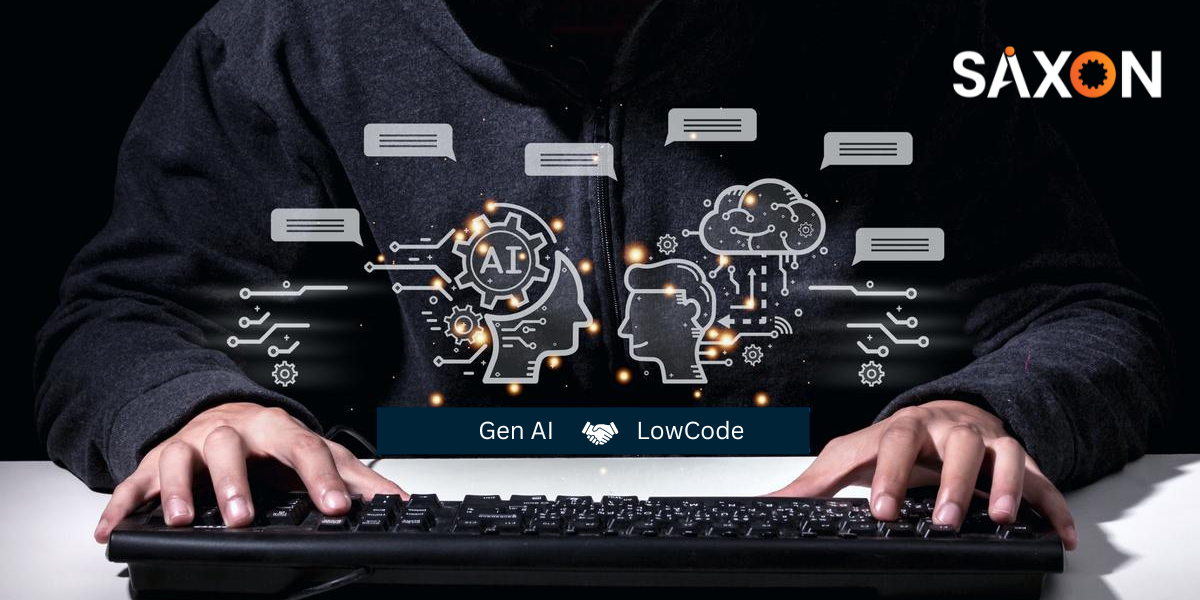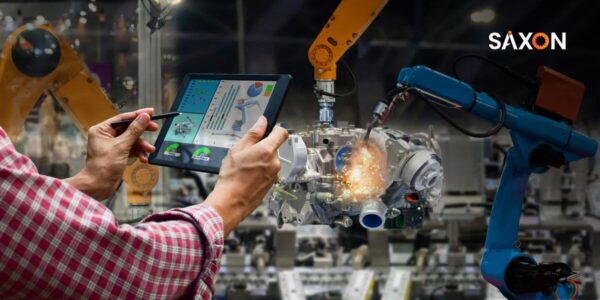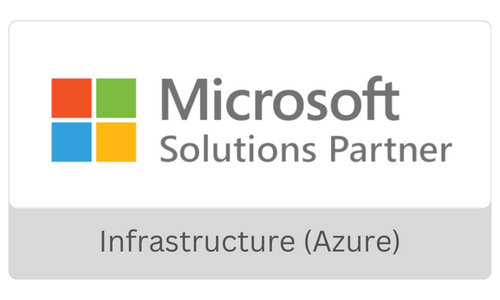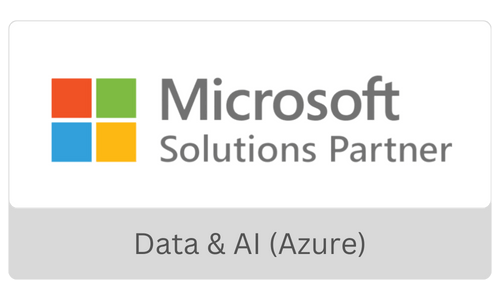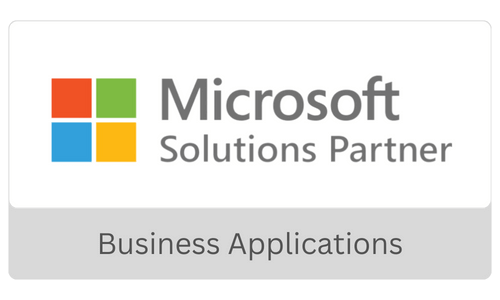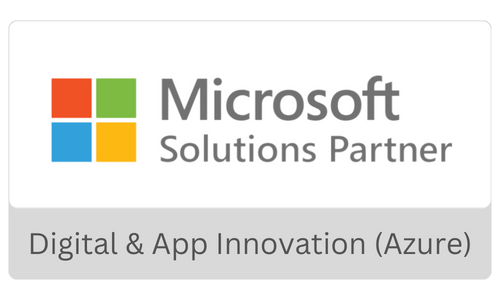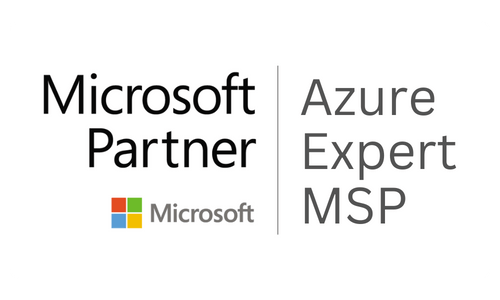As per IDC, there is a severe global developer shortage projected to escalate from 1.4 million in 2021 to 4 million by 2025. Even though the demand has steadily risen over the past few years, there is a severe shortage of skilled developers. Going at that pace, by 2030, the global talent deficit may result in $8.5 trillion of unrealized annual revenues. But how do you act on it? Besides nurturing developer talent, CIOs today have already risen to the occasion by adopting low-code/no-code platforms, which democratize app development and empower business teams to build the required apps. In this blog, we will find out how generative AI comes to the realm of low-code and no-code development and ushers in a new development category.
Leading tech giants such as Microsoft have intuitively designed declarative drag-and-drop interfaces (Power Platform), which enable swift initial adoptions and pilot projects. The already over-whelmed IT teams embraced the opportunity to delegate development to business teams who have a keen interest in harnessing low-code and no-code to enhance their business models. With a severe labor shortage, CIOs also have been turning to low-code platforms to ease the workload. Even then, the development process faces several challenges, such as coding errors, time-consuming testing, and the evergreen requirement for qualified developers. Here is where Generative AI can benefit low-code and no-code automation well.
The mind-boggling marriage of low-code platforms with Gen AI
According to Microsoft’s Low-Code Signals 2023 report, 87% of Chief Innovation Officers and IT experts believe that integrating elevated AI and automation into low-code platforms would significantly enhance their ability to leverage the range of capabilities available fully. As such, low-code software facilitates broader development accessibility within organizations, often extending to business users termed citizen developers. Simultaneously, generative AI enhances organizational efficiency and alignment. Generative AI employs machine learning algorithms to produce code autonomously and thus streamlines the software development procedure. It holds the potential to further simplify the transition from low-code to no-code. Through pre-built models and code templates, generative AI empowers developers to craft intricate applications without requiring extensive coding expertise. This democratization of the development process expands possibilities, enabling a more comprehensive array of individuals to engage in the creation of technological solutions.
Harnessing natural language processing for app development
According to Saxon AI Vice President of Technology, Joel Jolly, “The most robust offerings from low-code and no-code vendors will merge the advantages of visual developer interfaces with generative AI models, thereby letting users the option to seamlessly switch between using natural language or dragging visual elements to refine outcomes.” Generative AI also holds the potential to generate textual and multimedia resources for developers.
Microsoft’s Power Apps, a low-code solution, has already integrated generative AI-based capabilities through Copilot. It has introduced a chat interface that enables the creation of simple applications via conversational interaction. Furthermore, as highlighted by Ryan Cunningham, Vice President of Microsoft Power Apps, the resulting applications can also integrate generative AI instances for the end users.
The result of the duo is remarkable. Adding generative AI to Copilot performs dual purposes. First is, that it accelerates development cycles, and the second purpose includes embedding generative AI into the applications built. Cunningham emphasized that Microsoft’s Power Apps leverages generative AI’s natural language processing aspect to empower business users. They possess the domain knowledge necessary for applications within their respective business sectors yet lack formal coding backgrounds and thus become empowered citizen developers.
Easing the accessibility of low-code tools
The infusion of generative AI into low-code and no-code platforms is poised to diminish the barriers to entry for these development environments within enterprises. These coding capabilities of generative AI will be particularly advantageous for developers engaged in substantial projects seeking streamlined approaches to support standardized or intuitive requests. So, rather than sifting through libraries or getting stuck while recalling specific commands or terms, GPT and analogous generative AI tools will be capable of furnishing code samples that developers can subsequently utilize, modify, and enhance.
Accelerating with Copilot
Microsoft takes a prominent role in this landscape with GitHub Copilot. Let us find out how developers can simply leverage Copilot, the generative AI specializing in software engineering.
- Streamline mundane tasks: Copilot can expedite accomplishing the time-consuming, mundane tasks, like filling variables within an interface or constructing function templates.
- Intelligent autocompletion: Copilot can aptly anticipate the engineer’s intentions and effectively complete their coding endeavors. This is especially handy for tasks that involve writing recurring code or test cases, with Copilot generating tests and accurately forecasting the next test conditions.
- Pattern detection and generating error handling code: Copilot can identify novel code patterns and subsequently revise code accordingly. It can even generate error-handling code for functions.
Generative AI supercharging low-code development
Let us find the five definitive ways in which Generative AI will supercharge low-code development.
Optimizing
Ultimately, generative AI holds the capability to enhance the efficiency of low-code and no-code applications. Through analyzing usage patterns and data within applications, generative AI can generate optimized code to enhance application performance, minimize memory consumption, and boost scalability.
Automated Testing
Testing constitutes a vital phase of the software development journey, yet it often demands significant time and human resources. Generative AI presents a solution by automating the testing procedure by automatically generating test cases aligned with the application’s specifications. This streamlined approach not only lowers the time and energy invested in testing but also enhances the ultimate product’s quality.
Data Insights
Managing extensive datasets is commonplace within the realm of low-code and no-code platforms, and such data analysis can prove intricate and time-intensive. Generative AI offers a solution by automating the data analysis procedure by creating code capable of manipulating, analyzing, and visualizing data in novel and valuable manners. This capability expedites extracting insights from vast datasets, fostering a more rapid and efficient process.
Automated Code Creation
A developer can use generative AI to generate code automatically according to specified requirements. This can prove especially beneficial for repetitive coding assignments, including constructing user interfaces or formulating database schemas. Through this automation, developers can direct their attention towards more intricate coding endeavors, resulting in accelerated application development timelines.
Natural language processing
As mentioned above, harnessing natural language processing or NLP, many low-code platforms (such as Power Apps) help the users build apps sans the coding part. Nevertheless, it is not error-free and can be difficult to imply. Again, generative AI, with its analyzing and machine learning capabilities, can analyze and learn from large datasets, generate better code, and overall progress the accuracy of NLP.
Challenges with generative AI in low-code
Generative AI is a force multiplier. However, there are several challenges when it comes to low code combined with generative AI abilities. Prompts are the means of communicating; leveraging the appropriate prompts can lead to excellent results. However, figuring out what prompts can lead to the desired results is quite a challenge. Comparatively, the visual drag-and-drop user-friendly tools of low-code development are easier to maneuver for the teams. Furthermore, there are legal and security-related issues, such as intellectual property rights and data lineage, as the generative AI does not yet understand patented or copyrighted processes.
Summing up: Human + Generative AI collaboration in App generation
Generative AI in smart collaboration with humans, along with low code and no code platforms, can make a difference in software development. Being in the early stages of this generative AI revolution, it will take some effort to train the AI to come out as exceptional copilots for their human counterparts. After all, instructing the Large Language Models (LLM) to produce codes that embody security, scalability, extensibility, stability, maintainability, high availability, cleanliness, and possibly even refined styling needs a good amount of human work. Instead of completely automating a code-making machine, humans are aiming to train the generative AIs to complement and collaborate qualitatively with human developers- creating solutions that are so enhanced- that neither humans nor AI can build on their own.
We at Saxon AI are constantly innovating and believe in leveraging the power of AI to help enterprises of all sizes. At InnovAIte, our experts harness the latest Microsoft technology and Generative AI to build cutting-edge solutions and solve your business challenges. You can register and find out yourself.
You can follow us on LinkedIn and Medium to never miss an update.

